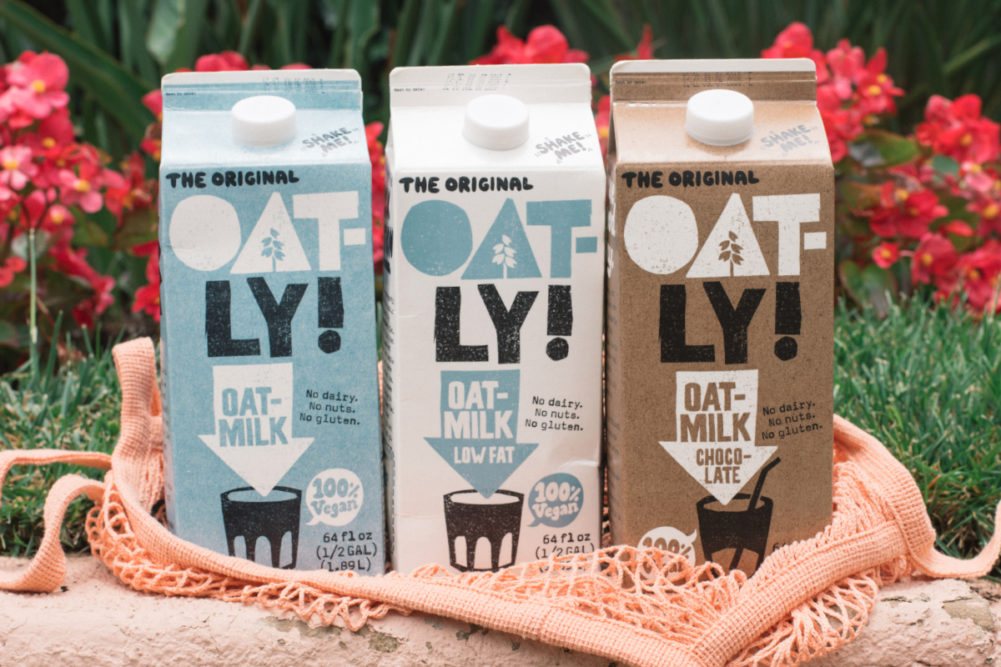 Growing demand for oat milk and other oat-based products represents a “real game changer” for the US oat market, said Randy Strychar, president, Ag Commodity Research, Vancouver, BC. Mr. Strychar made the attention-grabbing statement during the North American Millers’ Association’s April conference.
Growing demand for oat milk and other oat-based products represents a “real game changer” for the US oat market, said Randy Strychar, president, Ag Commodity Research, Vancouver, BC. Mr. Strychar made the attention-grabbing statement during the North American Millers’ Association’s April conference.
Any skepticism Mr. Strychar’s remarks may have generated were put to rest May 20 with the extraordinary success of the initial public offering (IPO) of Oatly Group AB on Nasdaq. At its IPO price of $17 per share, the shares were gobbled up, giving the company an eye-popping valuation of $10 billion with shares reaching $22.46, up 30%, a day later.
Considerable buzz has surrounded the Malmö, Sweden-based company in recent months. In addition to numerous prominent celebrities, its shareholders include Starbucks founder Howard Schultz, the investment colossus Blackstone Group, Inc., and its largest shareholder, a joint venture that includes China Resources Holdings Co., a state-owned Chinese conglomerate.
Where did Oatly come from? How is it a company that generated $421 million in sales last year is now valued at $13 billion?
Oatly is not a startup. In its Form F-1 filed ahead of the IPO with the Securities and Exchange Commission, a compelling picture is drawn of Oatly’s road to becoming a publicly traded company, how it believes it will grow into its remarkable valuation and challenges this rapid growth may pose to other users of oat products.
The company’s history dates back to the 1990s when scientists at Lund University in Sweden were studying lactose intolerance, a condition estimated to afflict two thirds of the global population. Exploring alternatives to dairy milk, the scientists settled on a base ingredient of oats because they are “globally plentiful, familiar across cuisines, cost effective and require low-input resources relative to livestock and other plant crops.” The research led to the first oat milk in 1995 and the first under the Oatly brand in 2001. When new management joined the company in 2012, sales had climbed to $29 million.
After rebranding its products, Oatly expanded in the United Kingdom in 2016 with a strategy of targeting coffee shops and specialty cafes. In less than three years, Oatly was outselling all other plant-based milks in the United Kingdom, including almond and soy. A similar playbook was employed when Oatly entered the US market in 2017. By the end of 2020, Oatly was in thousands of US locations, with annual sales of $100 million. China was entered successfully in 2019. Global sales growth would have been stronger still but for capacity constraints, and Oatly has built or is building plants in the United States, The Netherlands, Singapore, China and the United Kingdom.
Sustainability is front and center in the company’s aggressive marketing, emphasizing that Oatly products result in 80% less greenhouse gas emissions and land use and 60% less energy consumption than dairy milk. Assessing the potential market for its products, Oatly is eying the global dairy industry with retail sales totaling more than half a trillion dollars and growing 5.9% annually. Foodservice represents an additional opportunity.
Its 2020 annual sales growth was 99% in the United Kingdom, 199% in Germany and 182% in the United States, the company said. US growth was 203% in 2019. All told, sales grew about 500% between 2017 and the end of 2020. The company views the plant-based dairy market in its “infancy,” at 6% penetration versus dairy milk.
Among risk factors the company cites that may interrupt or slow its growth, Oatly cautioned its ability to source an adequate supply of high-quality oats “depends on many factors beyond our control.” The company has been subjected to supply interruptions in the past.
Such raw material tightness could be bad news for bakers and breakfast cereal makers in the United States, who appear poised to be competing even more in 2021 and beyond with Oatly and other manufacturers seeking to meet increasing demand. Still, the emergence of Oatly as a powerful force in the plant-based foods/beverage movement represents an exciting moment for grain-based foods and well may point to opportunities for others in the industry.





